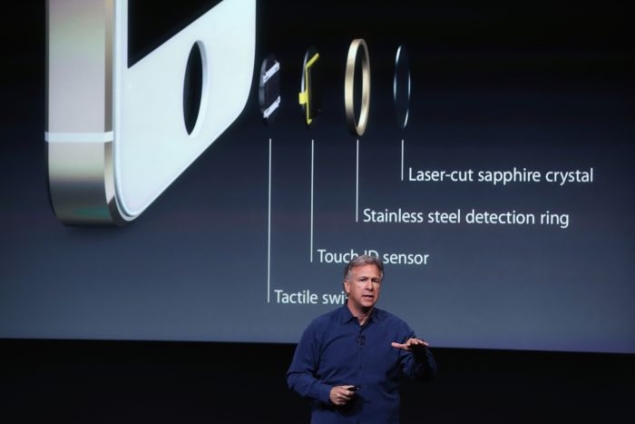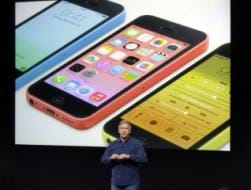Touch ID: Inside the fingerprint scanner on Apple's iPhone 5s

Apple unveiled
the new iPhone 5s and iPhone 5c at a special
event held at its headquarters in Cupertino. While the iPhone 5c did
not live up to its
promise
of being a 'low-cost iPhone', the iPhone 5s showed off some promising
innovations,
like the new Apple A7 chip and, perhaps the highlight of the event, a
built-in fingerprint scanner called Touch ID.Touch ID can be used to
unlock the phone, by simply placing a finger on the Home button. It can
also be used to confirm purchases made on the App Store, iBookstore or
the iTunes Store.
You can scan and add multiple fingerprints (e.g. left and right thumbs, as well as index fingers), including those from multiple people (e.g. your wife or kids), and Touch ID will authenticate based on any of stored prints.
In case you are worried about privacy, Apple assures that fingerprints are encrypted and stored in a secure area inside the new A7 chip. Fingerprints are not accessible to any third-party apps, and nor are they sent to Apple's servers or backed onto iCloud.
So what's the technology behind Apple's latest innovation? The Touch ID capacitive sensor embedded in the Home button scans your finger at 500ppi resolution to get a high resolution image of your finger. The sensor embedded in the Home button is just 170 microns thin.
The new Home button is made out of sapphire crystal, one of the "clearest, hardest" materials out there. The Home button protects the fingerprint sensor and also acts as a lens to precisely beam your fingerprint to the scanner. The Home button is surrounded by a steel ring, that can detect touches and tell Touch ID to start scanning when a finger is placed.
The sensor uses advanced capacitive touch to take high-resolution image of the sub-epidermal layers of your skin. The resultant image is then analysed, and grouped into one of three fingerprint types: Arch, Loop or Whorl. It then analyses ridges and other details too small for the human eye to see, to come up with a match for one of the stored fingerprints.
Here's a video that gives a closer look at Touch ID.

iPhone 5c and iPhone 5s launch in pictures
You can scan and add multiple fingerprints (e.g. left and right thumbs, as well as index fingers), including those from multiple people (e.g. your wife or kids), and Touch ID will authenticate based on any of stored prints.
In case you are worried about privacy, Apple assures that fingerprints are encrypted and stored in a secure area inside the new A7 chip. Fingerprints are not accessible to any third-party apps, and nor are they sent to Apple's servers or backed onto iCloud.
So what's the technology behind Apple's latest innovation? The Touch ID capacitive sensor embedded in the Home button scans your finger at 500ppi resolution to get a high resolution image of your finger. The sensor embedded in the Home button is just 170 microns thin.
The new Home button is made out of sapphire crystal, one of the "clearest, hardest" materials out there. The Home button protects the fingerprint sensor and also acts as a lens to precisely beam your fingerprint to the scanner. The Home button is surrounded by a steel ring, that can detect touches and tell Touch ID to start scanning when a finger is placed.
The sensor uses advanced capacitive touch to take high-resolution image of the sub-epidermal layers of your skin. The resultant image is then analysed, and grouped into one of three fingerprint types: Arch, Loop or Whorl. It then analyses ridges and other details too small for the human eye to see, to come up with a match for one of the stored fingerprints.
Here's a video that gives a closer look at Touch ID.

iPhone 5c and iPhone 5s launch in pictures







 .
.
0 comments:
Post a Comment